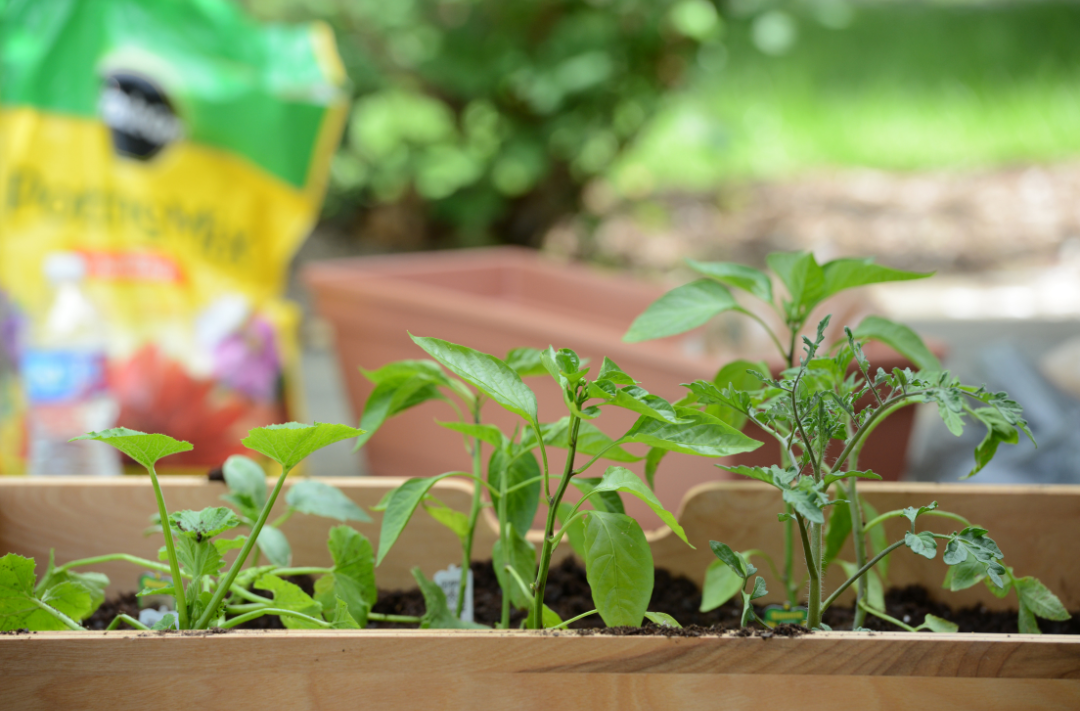You may remember from your childhood, watching adults in your neighbourhood or at friends’ houses working in their garden. It may have been a hobby or a necessity to feed the family. Regardless of the reason, growing your own food in a garden is a great way to save money at the grocery store, and it is not difficult to start. With a few pointers, you can be on your way to growing your own food better than anything you’ll find in the stores!
1. Your Garden Can Be Any Size That is Practical
Whether you live in a suburban house, on an acreage, or in an apartment, there are plenty of options to get started growing food. You don’t want to go all in and create a huge garden right off the bat. The trick is to start small and work your way up.
The most traditional garden setup is a dedicated spot in the backyard. This works well for houses with the land to use for it. Smaller yards can accommodate a couple of raised beds. But people living in apartments or other alternative living situations should start with something smaller. If you have a balcony, set up a small bed, or even just a couple of plant pots. Even a large window can be home to a small herb garden. Anything helps.
If there are no options on your property, look around for a community garden. They are becoming a more popular option for people wanting to grow their own food and can lead to making friends as you plant and harvest alongside other members of your community.

2. Know Your Sun, Soil, and Water
Sun, soil, and water are the three essential ingredients needed for a garden to thrive. Most vegetables need a lot of sunshine, at least six to eight hours a day. However, there are a couple of outliers that could benefit from a shady spot under a tree.
Before buying any soil, do a simple squeeze test to determine the type of soil you are working with – clay, sand, or loam. Root vegetables like carrots and onions will do just fine in sandy soil, while clay soil should be reserved for flowers and trees. A bag of topsoil from your local greenhouse will do the trick if you don’t have naturally occurring loam soil in your yard.
We all learned as kids that plants need water to grow. However, some vegetables require more water than others. Watch for signs of dehydration, and be sure to water often during hot, dry spells.
3. Location, Location, Location
There are three location aspects you need to consider when planting a garden:
Location on the globe – Different climates and environments will be suitable for different plants. For example, fruits that thrive in the Okanagan Valley may not grow up north in Nunavut.
Location in the yard – You want to ensure that your garden is in a prime spot on your property to receive as much sunlight as possible. In Canada, you should try planting your garden on the south side of your property to get the most sun.
Location within the garden – There is an art to planning the locations of the vegetables in your garden, but doing so will reap as bountiful a crop as possible. For example, tomatoes grow well near most other vegetables, but potatoes can spread blight to them, and corn will attract pests that can kill tomatoes.

4. Timing is Everything
A big mistake many rookie gardeners make is thinking that the first warm day means seeds should be planted. This is not the case. There can be a risk of frost well into May that can kill your plants, so follow the planting guide on your seed packet.
Once your vegetables are ripe, some might need to be harvested immediately, while others can wait a little longer. Keep a close eye, and don’t be afraid to take a bite out of a vegetable if you’re not sure whether to harvest it yet.
Most importantly, be patient. The delicious bounty is worth the wait.
There are few feelings more satisfying than sitting down to a homemade meal cooked with fruits and vegetables that you grew yourself. The food will be fresh, in season, and taste better than anything store-bought. Not only do you reap the reward of delicious food, but gardening is a good workout and stress reliever. There really is no downside.
Courtesy: remax.ca


Leave A Comment